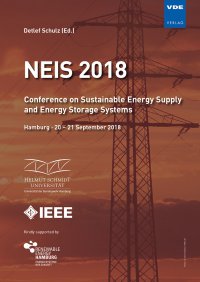Renewable, Cellular Energy Clusters Providing Ancillary Services
Conference: NEIS 2018 - Conference on Sustainable Energy Supply and Energy Storage Systems
09/20/2018 - 09/21/2018 at Hamburg, Deutschland
Proceedings: NEIS 2018
Pages: 7Language: englishTyp: PDF
Personal VDE Members are entitled to a 10% discount on this title
Authors:
Pieper, Christoph (Institute of Process Engineering and Environmental Technology, Chair of Energy Process Engineering, Technische Universität Dresden, 01069 Dresden, Germany)
Hess, Tobias (Institute of Electrical Power Systems and High Voltage Engineering, Chair of Electrical Power Supply, Technische Universität Dresden, Germany)
Henoch, Jasmin (Institute of Power Engineering, Chair of Thermal Power Machinery and Plants, Technische Universität Dresden, Germany)
Abstract:
Over the course of the German energy transition the volatile power supply from renewable energy sources (RES) like solar and wind power is constantly rising. Alongside conventional power plants are displaced. However, the security of energy supply has to be guaranteed, which is so far provided by ancillary services from large conventional power plants. Thus, smart concepts are needed to provide flexible and effective ancillary services. One possible solution is to provide these services by renewable, cellular energy clusters. This publication suggests a holistic approach to the complex simulation of these systems. The approach is based on the simultaneous simulation of the different components of the energy cluster within specialized simulation environments that are already available. Thus connecting these models via co-simulation framework reduces the workload for modeling such energy clusters. This publication combines steady state models (Ebsilon® Professional), grid models (Digsilent PowerFactory) and energy storage models (based on MS Excel) interconnected via the co-simulation tool (mosaik). The data set used for the supply plants and storage, is provided by the TecZET (center for energy technologies) at TU Dresden. Real data for the energy demand over the course of a year is derived from the buildings at the campus, thus representing an office orientated demand. It can be shown, that the co-simulation framework is capable of delivering detailed data on complex systems while using existing models for simulation.


